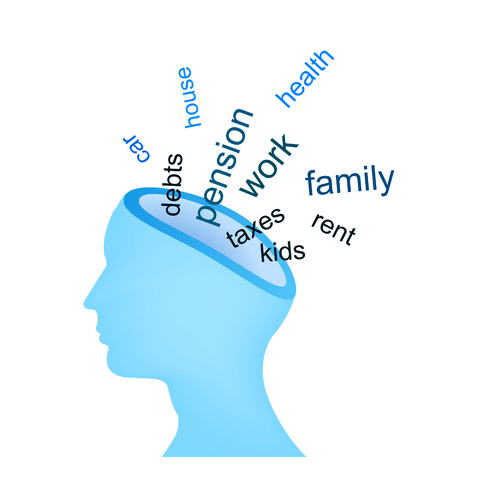MEDITATION TIP OF THE WEEK
…IS A SERIES OF SHORT, EASY TO REMEMBER, AND BASIC TIPS ON HOW TO MEDITATE. PLEASE LET ME KNOW WHAT YOU THINK, IS IT HELPFUL?
Meditation Is Not About Getting Rid of Thoughts
When you meditate, you don’t have to rid your mind of thoughts. We’ve talked about this before on this site. And I’ve said that when meditating, you shouldn’t focus on your thoughts, nor should you follow them.
I’ve also said that you can use your thoughts in meditation. And, I’ve even insisted that thoughts aren’t real, that they have no “place” where they exist. So now, why I am writing that you should “choose your thoughts?”
Choose Your Thoughts Like You Choose What You Eat
How many of us go along with our negative or critical thinking because we’re so used to doing it? How many of us feed off of “toxic” or “rotten” thoughts because they keep us engaged in habitual ways of thinking? Would you do the same with the food that you eat? Think about it.
Many of us are working on trying to become more aware of what we put into our bodies. We’ve come to realize that certain foods, while tempting or alluring, aren’t really good for us. And so, we’ve become choosy – even vigilant – in deciding what to eat. But, do we do this with our thoughts?
Do you decide what you’re going to think about? Do you abandon certain thoughts because you know that they’re not good for you? Or do you allow whatever arises in your mind to stay, even taking the time to keep nasty thoughts going because you’re used to doing so?
Did you know that learning to meditate can actually help you to become more aware of what you’re thinking? And, as you gain awareness, you can begin to decide what you’ll think about and what you’ll allow to pass through, like clouds in the sky.
Working With Thoughts
Take a moment to relax and watch your mind. What do you find? Thoughts? What happens when you simply watch your thoughts without following after them. Do they persist, or do they fade as quickly as they’ve arisen?
What we normally do is to follow our thoughts, making up additional thoughts after an initial thought arrives. Here’s an example that I’ve used before.
Suppose that I’m walking down the street and I see a car that I really, really like. Let’s pretend that this car is also an expensive car and that I don’t have nearly enough money to ever hope to buy this car. Here’s the stream of my thoughts:
- Wow what a nice car (I should have stopped the thinking here, allowing this thought to “dissolve” back into my mind. But, I didn’t….)
- I wish I had a car like that
- That car must be really expensive
- I’ll never be able to afford such a nice car
- Why can’t I make more money
- Nursing is so pathetic! I work so hard, and for what? I’m not paid what I’m really worth!
- I should have stayed in computer programming back when I first started in 1979 instead of going into nursing
- Just think of my friend Sebastian, he makes so much money doing computer programming
- He gets to work at home
- If I worked at home I wouldn’t even have the space
- I wish I had a bigger home, but how could I afford a big home
- And, who’d take care of it?…..yada…yada…
This kind of thinking is like eating rotten food, yet we do this all of the time, moving from one thought of a car, or person, or food, or job, we spiral off into an endless litany of thoughts and emotions. So, choose your thoughts, choose what you think about. How?
How to Choose Your Thoughts
When I say that you can choose your thoughts, I’m not saying that you should spend your day trying to think and then decide on what you want to think about. Instead, go about your day aware of your thoughts, maintaining mindfulness and when a thought arises in your mind, allow it to dissolve back into your mindfulness and awareness unless you need to “give it more thought.” Does this make sense?
For instance, in the stream of thoughts that I shared above, it would be best when I think. “Wow, that’s a nice car,” to just leave it at that, and not go into thinking that I need the car, that I don’t have enough money to buy the car, etc.
Choosing thoughts using meditative awareness and mindfulness is about recognizing that as your thoughts arise, you don’t have to follow after them. In formal meditation practice, you don’t think about past thoughts, think about the future thoughts, or try to prolong your present train of thoughts; you remain aware in the present, maintaining moment-to-moment awareness.
Choosing which thoughts to follow-through with takes time. And, from my experience and the experience of many others who I’ve talked with, meditation is an excellent way to learn how to watch your thoughts without following after them. Just…another great reason to learn how to meditate.
So, was this post helpful? Does it give you ideas on how to get a healthier diet of thinking? Let me know.
So, How Do You Meditate?
Maybe you’ve already got a meditation practice. If that’s the case, great! Keep it up. And feel free to use all of the content from this site to support you in your efforts. If you haven’t started to meditate, begin now.
Many people don’t meditate because they believe that they need to do “something special” in order to meditate, maybe you’re one of them. “Doing something” special isn’t the case. All you need is your breath, and a few minutes of time set aside to begin your practice. Here are some tools to get you started:
- Meditation audio for using your breath as the anchor of your attention during meditation.
- Download the FREE ebook, How to Work with the Four Distractions to Meditation. It’s basic info on how to work with the obstacles that can occur when you first learn to meditate. It’s real handy, and…it’s free!
- Ebook and two chapters from the book, Minding the Bedside: Nursing from the Heart of the Awakened Mind, on how to meditate.
- And of course, buy the book, Minding the Bedside: Nursing from the Heart of the Awakened Mind. Even though it’s written for nurses, it can be read by anyone. I’ve had feedback from many people who aren’t nurses that it changed how they viewed and worked in the world. You can even buy it in a Kindle version!
This site has tons of tools for learning how to meditate and be compassionate.
Check out the Related Mindfulness and Meditation Articles below. I also encourage you to look through the HUNDREDS of articles that I’ve written and especially check out my weekly meditation tips and other useful meditation materials provided for your health and well being. And please let me know if you’d like to discuss anything with me, have any questions or need clarification regarding anything that I’ve written about.
Thanks for visiting and have a mindful day.






[…] are times when I allow myself to get caught up in my thoughts and find myself circling the drain of despair. At these times I have a choice; I either go down […]
I really enjoyed reading this piece on how meditation isn’t about getting rid of thoughts but rather choosing them wisely, much like we choose our food. The analogy between selecting thoughts and selecting what we eat struck a chord with me. It’s a refreshing take on mindfulness and meditation, emphasizing the power of awareness in our daily lives. Jerome Stone’s insights and practical advice are both enlightening and inspiring. It’s a great reminder of how being mindful of our thought patterns can significantly impact our overall well-being. Fantastic work!
Hey there – thanks so much for sharing those insights. And, thank you so much for your feedback, I appreciate it. It’s always good to know that what I have to offer is of value to those who read my posts. Take care